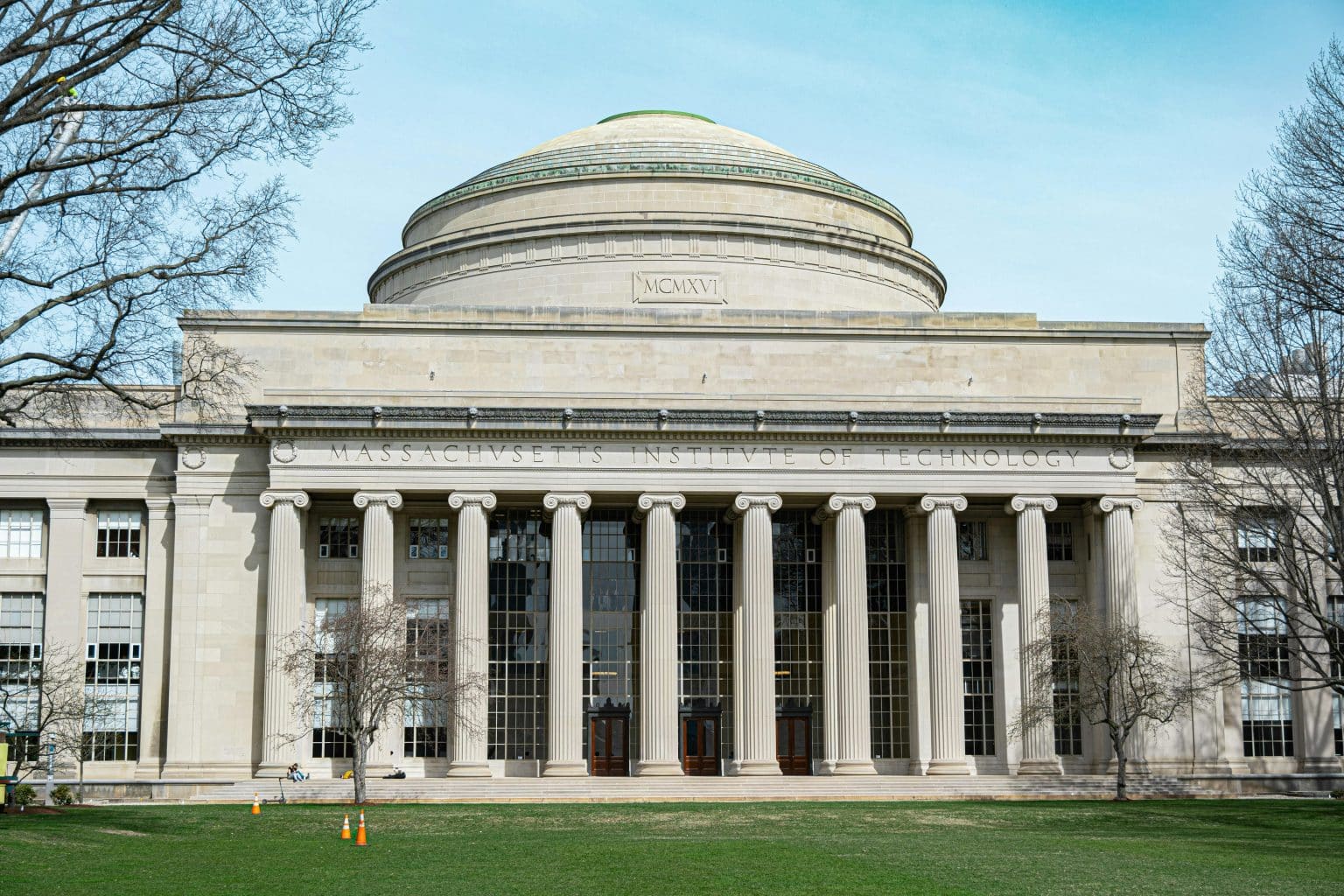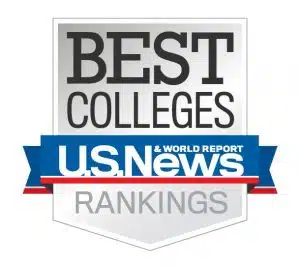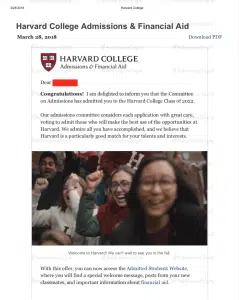Does MIT have Early Decision? The short answer is no. Instead, they offer Early Action. This isn’t the only thing you need to know if you’re thinking about applying to MIT, though.
This blog will walk you through all the important details. You’ll learn about MIT’s application process, deadlines, and how to figure out if MIT’s Early Action is the best option for you. Keep reading to get all the info you need to make the right choice for your future.
- MIT Offers Early Action, Not Early Decision
- MIT Early Action Acceptance Rate
- MIT Regular Decision Acceptance Rate
- Should You Apply Early Action at MIT?
- MIT Admission Requirements
- When Does MIT Application Open?
- Frequently Asked Questions
- Takeaways
MIT Offers Early Action, Not Early Decision
You’ve probably heard of Early Decision (ED) at some schools, but here’s the deal: MIT doesn’t do ED. Instead, they have Early Action (EA), which works differently. Think of EA as applying early without locking yourself in. You can apply by November 1st, find out sooner, and still keep your options open. It’s non-binding. That means you’re free to apply to other schools too.
Here’s the catch, though. If another school you’re applying early to has restrictions like a “single-choice,” “restrictive,” or “binding” policy, you’ll need to respect their rules. For example, if you’re accepted to a binding ED school, you’re committed to going there, even if MIT says yes. So, check the rules carefully before deciding.
MIT EA Timeline
Here’s how Early Action works at MIT:
- Deadline to apply: November 1
- Decision released: Mid-December
- Reply date: May 1
Your options:
- If you’re accepted, congrats! You’ve got a spot, but you don’t have to decide until May 1.
- If you’re deferred, your application will automatically roll into the Regular Action pool for consideration with later applicants.
- If you’re denied, unfortunately, you won’t be eligible to apply again during the Regular Action cycle.
MIT Early Action Acceptance Rate
MIT’s Early Action (EA) program is super competitive, so let’s break it down. For the Class of 2028, 12,563 students applied EA, and 661 were accepted—that’s an acceptance rate of about 5.3%. Yeah, it’s tough, but if you’re dreaming of MIT, don’t let that number scare you.
Here’s a quick look at the Early Action acceptance rates over the past few years:
| MIT Class | Total EA Applications | EA Acceptance Rate |
| 2028 | 12,563 | 5.3% |
| 2027 | 11,924 | 5.7% |
| 2026 | 14,781 | 4.7% |
| 2025 | 15,036 | 4.8% |
| 2024 | 9,291 | 7.4% |
The number of people applying Early Action to MIT changes a bit every year, like how the Class of 2026 saw a record-high number of applications, but it’s dipped slightly since then.
The acceptance rates, though? Those have been slowly shrinking over time. Back in the day (well, for the Class of 2024), the acceptance rate was 7.4%, but for the Class of 2028, it’s down to 5.3%.
What’s going on? Honestly, it’s just that more students like you are dreaming big and applying to MIT, which makes the competition tougher. But don’t stress. This is all about putting your best foot forward and showing MIT what makes you amazing!
MIT Regular Decision Acceptance Rate
Now, if you’re not going for Early Action and are thinking about Regular Decision (technically, MIT calls this process “Regular Action,” which is the same), let’s break it down. For the Class of 2028, 15,669 students applied Regular Decision, and 614 were admitted. That gives an MIT RD acceptance rate of about 3.9%.
Take note: RD applicants also include those who were deferred from Early Action. So, in total, MIT looked at 23,720 applications for RD.
Here’s a quick look at how MIT’s RD acceptance rates have shaped up over the years. These numbers give you an idea of how competitive RD has been at MIT:
| MIT Class | Total Regular Action Applications | Regular Action Acceptance Rate |
| 2028 | 15,669 | 3.9% |
| 2027 | 14,990 | 3.8% |
| 2026 | 19,195 | 3.3% |
| 2025 | 18,204 | 3.4% |
| 2024 | 10,784 | 7.1% |
The numbers show that the RD acceptance rate has been steadily dipping over the years, just like with Early Action. Back in the Class of 2024, the RD acceptance rate was a solid 7.1%, but for the Class of 2028, it’s down to just 3.9%.
Why? More students like you are aiming high and applying, which is amazing, but it also makes it tougher to get in. Whether you go RD or EA, the key is to focus on making your application stand out and showing MIT why you’re their perfect fit!
Should You Apply Early Action at MIT?
So, you’re probably wondering: should you go for Early Action (EA) or Regular Decision (RD) at MIT? Let’s break it down.
The EA acceptance rate for the Class of 2028 was 5.3%, while the RD rate was even lower at 3.9%. There’s a difference, sure, but here’s what you need to know: applying EA doesn’t guarantee a higher chance of getting in. Both rates 5.3% and 3.9% are highly competitive.
Applying EA just means you’ll hear back sooner and possibly have a better chance to show your interest in MIT earlier. The real kicker? EA is non-binding, so if you get in, you don’t have to commit yet. Plus, you’ll still have time to compare offers from other schools.
On the other hand, RD gives you more time to work on your application, which might make a big difference if you’re trying to perfect that essay or add new accomplishments to your résumé.
At the end of the day, both routes are super competitive, but MIT is all about finding students who shine no matter when they apply. If you’re aiming for EA or RD, the key is showcasing what makes you the perfect addition to the MIT community.
MIT Admission Requirements
Thinking about applying to MIT? Here’s a quick breakdown of everything you’ll need to get your application together.
High school transcripts
Your transcript is super important because it shows your academic journey. MIT wants to see that you’ve taken on challenging courses, especially in math and science. Make sure your transcript is sent directly from your school counselor, registrar’s office, or principal.
If your school doesn’t have a counselor, no worries just have an official from your school submit it. You can upload it through the MIT application portal or send it via email. Just make sure it’s official!
MIT doesn’t set a strict minimum GPA, but they do expect a strong academic record. The average weighted GPA of admitted students is around 4.2, which shows they’ve taken advanced or honors courses and excelled in them.
While a high GPA is important, MIT looks at the overall picture including the difficulty of your courses, your grading scale, and your class rank, so don’t stress if your GPA isn’t perfect. What matters most is that you’re challenging yourself and showing MIT you’re ready for their rigorous academic environment.
Test scores
MIT requires either the SAT or the ACT, and they don’t need the writing sections of either exam. They’ve got a superscore policy, which means if you take the test more than once, they’ll consider your highest score from each section.
If you’re not a native English speaker, you may need to provide an English proficiency test like the TOEFL or IELTS. It’s good to know that MIT doesn’t have a set “cut-off” score, but competitive scores are a good way to show that you’re prepared for MIT’s rigorous academics.
MIT doesn’t have a strict “cut-off,” for test scores, but it’s still important to aim for competitive scores. Here’s a breakdown of the SAT for admitted students, so you have an idea of where you stand:
| 25th Percentile SAT Composite Score | 50th Percentile SAT Composite Score | 75th Percentile SAT Composite Score |
| 1520 | 1550 | 1570 |
As for the ACT scores:
| 25th Percentile ACT Composite Score | 50th Percentile ACT Composite Score | 75th Percentile ACT Composite Score |
| 35 | 35 | 36 |
So, if you’re aiming for a strong application, you’ll want to target scores in these ranges. But remember, MIT looks at the whole picture. Your scores are just one part of what makes you a great candidate!
Letters of recommendation
You’ll need two letters of recommendation. One should come from a math or science teacher, and the other from a humanities, social science, or language teacher. MIT wants to hear from teachers who know you beyond just your test scores, so choose people who can speak to your abilities and personality.
You’ll also need your school counselor to submit a Secondary School Report and your transcript.
Essays
MIT wants to get to know you as a person. That’s why they ask for several supplemental essays as part of the application. For the 2024–2025 application, here are the questions you’ll be answering:
- What field of study appeals to you the most right now? (You’ll choose from a drop-down list and explain why this field at MIT is the right fit for you.)
- What’s something you do just for the pleasure of it? (MIT wants to know about the things you do just because you love them, not because you’re required to.)
- Tell us about a time you’ve done something unexpected in your education. (Maybe you took a different route to a goal, or maybe you tried something outside the box—MIT loves seeing students who think differently!)
- How have you collaborated with others to make an impact? (Whether it’s helping in your community or working on a team project, this is your chance to show MIT how you work with others to create something meaningful.)
The essays are short, about 100–200 words each, so don’t worry about writing a novel. There’s also a final, open-ended text box where you can tell MIT anything else you think they should know. Just be yourself, and remember that they’re not looking for the “perfect” answer. They’re just looking to get to know the real you!
Activities
In the application, you’ll have a chance to list your top four activities. These should be the things you’re most passionate about. Whether it’s sports, clubs, volunteer work, or a personal project, pick the activities that reflect who you are and what you care about.
Additional notes
If you’ve taken Advanced Placement (AP), International Baccalaureate (IB), or other standardized exams, you can self-report those scores on your application. You don’t need to send them officially yet. MIT will verify everything once you’re accepted.
When Does MIT Application Open?
If you’re getting ready to apply, you’re probably asking, “When does the MIT application open?” Well, technically, MIT just wrapped up the last application cycle, but don’t worry—you can start working on your application for the next cycle soon!
MIT typically starts accepting applications in August each year, so be sure to mark that on your calendar. In the meantime, you can get a head start on gathering your materials and brainstorming ideas for your essays. Just don’t forget to keep an eye on the deadlines:
- Early Action Deadline. November 1st. This is when all your application materials need to be submitted, including your essays, recommendations, and standardized test scores.
- Regular Action Deadline. January 6th. This is the last chance to apply for that year, so don’t miss it!
Remember, if you apply Early Action and get deferred, you’ll still be considered for Regular Action, so you don’t have to worry about being left out if things don’t go as planned. MIT takes a comprehensive look at each student, so hang in there.
Frequently Asked Questions
1. Does MIT offer Early Decision?
MIT doesn’t offer Early Decision (ED), but they do have Early Action (EA). The cool thing about EA is that you can apply early (by November 1st) without any commitment to attend if you’re accepted. So, if it feels right for you, go ahead and give it a shot.
2. What’s the acceptance rate for MIT Early Action?
If you’re thinking about applying Early Action to MIT, it’s important to know that it’s pretty competitive. For the Class of 2028, about 12,563 students applied Early Action, and 661 were admitted. That’s an Early Action acceptance rate of about 5.3%.
3. What’s the difference between Early Action and Regular Decision?
Early Action and Regular Decision both give you the chance to apply to MIT, but the deadlines are different. For Early Action, you’ll need to apply by November 1st, while Regular Decision is due by January 6th. Early Action is non-binding; you’re not committing to attend if you’re accepted.
4. When is MIT’s application deadline?
If you’re planning to apply, the deadlines are important to keep track of. For Early Action (EA), the deadline is November 1st, and that’s when everything your application, essays, recommendations, and test scores need to be submitted. If you’re going for Regular Decision (RD), the deadline is January 6th. Remember, if you apply EA and get deferred, you’ll still be considered for RD, so you won’t be left out of the process.
Takeaways
- MIT doesn’t have Early Decision, but it offers Early Action, which means you can apply early without being locked into attending if accepted.
- Early Action is competitive, with about a 5.3% acceptance rate, but MIT cares more about who you are and your passions than just your grades.
- Regular Decision has a slightly lower acceptance rate (3.9%), but you’ll still be considered if you’re deferred from Early Action.
- When applying, you’ll need your transcripts, test scores, letters of recommendation, and essays, so focus on showing MIT what makes you unique.
- If you want extra guidance through the application process, AdmissionSight’s Private Consulting Program can help you craft the perfect MIT application and increase your chances of getting in.
































